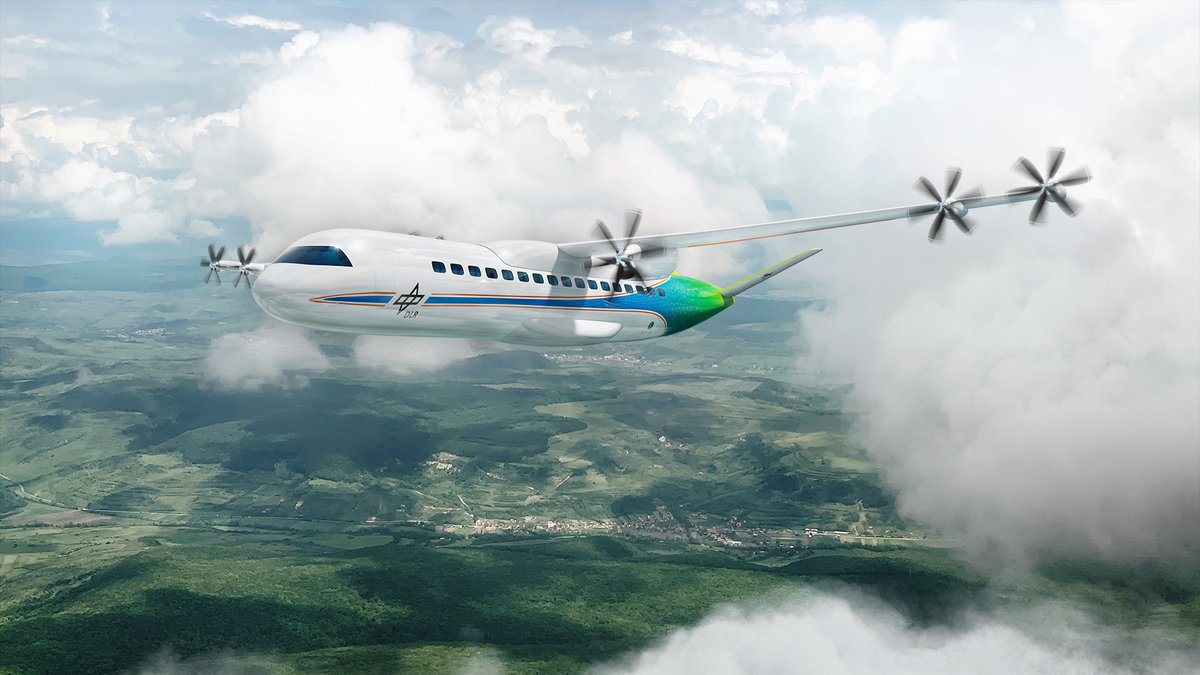Development of low-emission aviation engines of the future
Aviation is considered a driver of climate change. According to the German Aerospace Center (DLR), global aviation accounts for 3.5 percent of global warming. With today's aircraft engines, the climate targets set by policymakers are barely achievable. Electric and hybrid-electric propulsion systems offer an alternative. Scientists at BTU led by Prof. Dr.-Ing. Klaus Höschler and Prof. Dr.-Ing. Georg Möhlenkamp are working on solutions for aviation, as well as on drives for rail, road and off-road, at the Center for Hybrid Electric (Aircraft) Drives and Systems Research (CHESCO for short).
"Electric motors are very efficient and powerful. In the foreseeable future, only smaller aircraft with up to four passengers will be able to fly under a range of 200 kilometers on battery electric power," says Prof. Möhlenkamp, head of BTU's Chair of Power Electronics and Drive Systems. "Compared to kerosene, the energy density of batteries available today is still too low to use them to power larger commercial aircraft during a medium-range flight."
Hybrid-electric propulsion systems, and thus the combination of gas turbine with generator or fuel cell, battery and electric motor, enable a variety of different propulsion systems. "Until now, gas turbine engines in conventional aircraft provided both power generation and thrust. With hybrid-electric propulsion systems, it is possible to decouple these processes. This results in innovative design possibilities," says Prof. Höschler, Chair of Aeroengine Design. "The turbines no longer hang under the wings, but can be housed inside the aircraft, and thrust is generated by means of electrically driven propellers. For additional propulsion during takeoff, for example, battery-powered electric motors can be connected to propellers that can also recuperate electrical energy during descent." The new aircraft designs in short- and medium-haul traffic could significantly reduce emissions of climate-damaging gases in the future. The scientists expect savings of 20 to 30 percent. "In addition, with these designs, we will reduce noise for people on the ground," Prof. Möhlenkamp said. "They will hardly hear the machines in the air."
Developments in aviation are lengthy, and technological changes are subject to high safety standards. "Our goal is to shorten the development time of innovative propulsion technologies," says Prof. Klaus Höschler, summarizing the center's goals. "In its final stage of expansion, starting in 2026, CHESCO will bring together the development, realization and testing of these drive technologies at a single location - from the laboratory to a manufacturing facility to a test center," says Prof. Höschler, summarizing the three areas of CHESCO. A scientific facility, the Research Center, is used to develop the design of components and systems. In the Fast-Make Electrification Research Center (f-merc), researchers create prototypes that are tested in the Test Center. "By bundling all competencies and fully digitizing all development, production, operation processes, we will be able to develop new components in the shortest possible time," says Prof. Höschler.
In cooperation with the Institute of Electrified Aero Engines of the German Aerospace Center (DLR), several Fraunhofer institutes, ACCESS e.V. and industrial partners such as Rolls-Royce, an integrated research center will be successively created in the Technology and Industrial Park (Tip) in the north of Cottbus by 2026. Up to 400 employees* are expected to work at CHESCO (BTU) in the future.
In June 2021, the Interministerial Working Group (IMAG) Lausitz of the state government confirmed the eligibility of CHESCO for funding. On January 5, 2022 Brandenburg's Minister of Science Dr. Manja Schüle handed over the grant notification in Cottbus. Prior to this, the Investitionsbank des Landes Brandenburg gave the go-ahead for the establishment of a center for research into hybrid-electric (aircraft) drives and systems at BTU Cottbus-Senftenberg by approving the first sub-project for around 39 million euros. A total of 238 million euros will flow into the development and equipment of the research center over the next five years.
Further funds for a first regional transfer project amounting to 17 million euros are to enable Lusatian companies to get to know the state-of-the-art manufacturing technologies applied in f-merc and thus further develop their own product portfolio by 2026.

